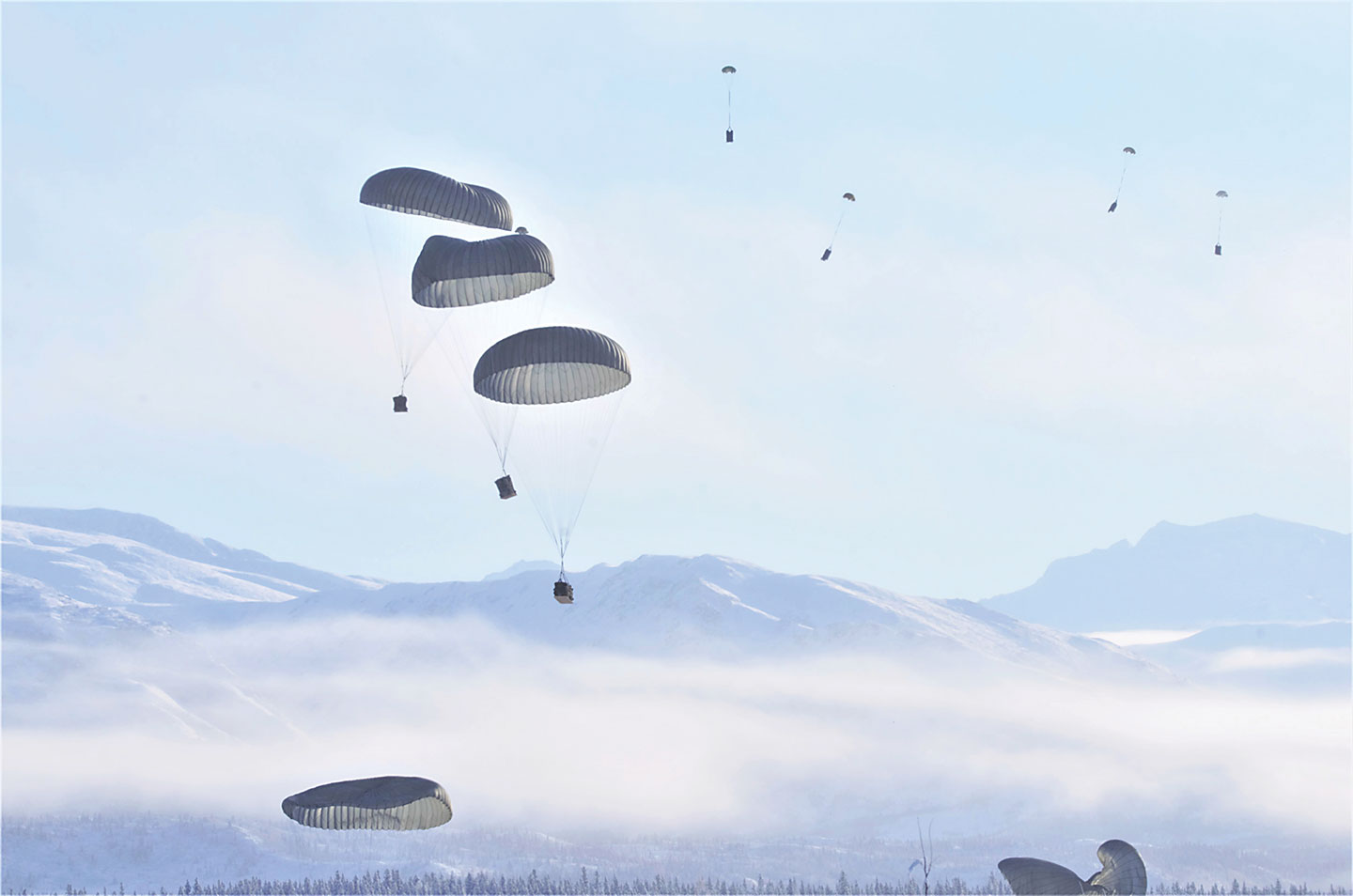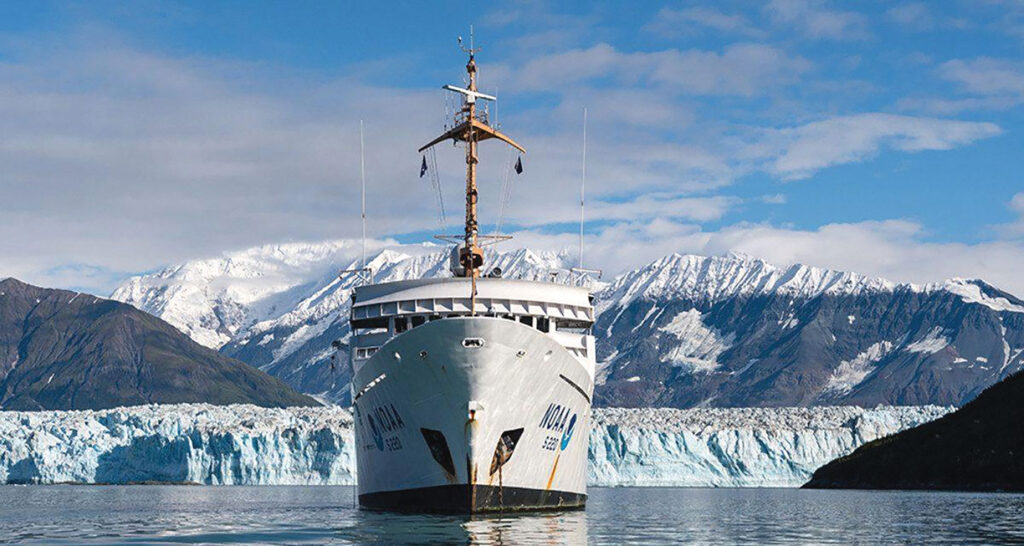The National Oceanographic and Atmospheric Administration Ship Fairweather docks in front of Hubbard Glacier off the coast of Alaska. The hydrographic survey vessel primarily maps coastal waters to update nautical charts and mainly operates in Alaskan coastal waters. LT. CMDR. DAMIAN MANDA/NOAA
TROY J. BOUFFARD AND DR. RYAN BURKE
The White House in early October 2022 released its new National Strategy for the Arctic Region (NSAR), a significant update since the 2013 inaugural edition. A few days later, the 2022 National Security Strategy (NSS) was released with Arctic-specific priority language included for the first time. Near the end of the month, the U.S. Department of Defense (DOD) released an updated National Defense Strategy (NDS) with updated Arctic-specific content, marking October 2022 as a pivotal moment for U.S. Arctic-related strategic guidance. Additionally, 2023 will see the release of both the Implementation Plan for NSAR and DOD’s next iteration of its Arctic strategy.
What was long considered tomorrow’s security challenge is no more. The Arctic is the challenge of today. Of the four pillars in the NSAR, security leads with purpose to “develop capabilities for expanded Arctic activity” with three strategic objectives: 1) improve our understanding of the Arctic operating environment, 2) exercise presence to support priority goals and 3) maximize unity of effort with allies and partners. Whether hard or soft security, such objectives effectively provide appropriate national guidance and intent for both foreseeable needs as well as looming uncertainties. Moreover, the security pillar deliberately and meaningfully synchronizes with the other national strategies and policies while providing executive-level guidance to whole-of-government efforts. The security pillar clearly emphasizes the necessity of homeland defense — the need to deter threats to the homeland while protecting the people of the United States and defending sovereign territory. The NSAR’s emphasis on developing capabilities aligns with U.S. Northern Command’s (USNORTHCOM) unprecedented pursuit of operational relationships with federal partners such as the National Oceanic and Atmospheric Administration (NOAA) for improved understanding of the operating environment and greater Arctic presence. Establishing liaison and coordination with Arctic-present agencies and critical providers of environmental intelligence such as NOAA is a bold and necessary move indicating USNORTHCOM’s unwavering commitment to meeting national objectives in the flurry of recent Arctic strategies and policies. The NSAR is just the start.

The 2022 NSS is a paradigm-shifting moment for the Arctic in terms of national priority direction and opportunities. For the DOD, the articulated Arctic language in the 43-page 2022 NSS provides enough latitude and intent to ensure that requirements can be identified, defined and developed while anchored to tangible national authority. Moreover, the NSS guides development and implementation of the NDS, which guides development and implementation of the National Military Strategy (NMS) — all of which form the triad of national military guidance for the U.S. that provides directions for development and implementation of critical constituents such as campaign plans, conceptual plans, operational plans, and other joint- and service-component products.
Section VI of the 2022 NDS lists the Arctic as one of the six priority regions for defense, emphasizing homeland defense, deterrence and enhanced maritime domain awareness in the Arctic as among the key themes. The DOD NDS Arctic priorities clearly compete with others and risk being subordinated to areas of greater perceived significance. However, given current global threats, continued proactive Arctic defense approaches are necessary to maintain stability. The current — yet stable — regional competition in the Arctic can be preserved through articulating the issues, advocating awareness and advancing the discussion to prevent the evolution of unconstructive, or even conflict-level, circumstances.

Until a crisis occurs in the Arctic, any effort — deterrence or otherwise — to make security gains in the region is certainly worthwhile. Such priorities complement the work by many others in the region throughout the recent decade and beyond. The U.S. is also known for its unmatched suite of Arctic, defense-related strategies, which include current versions of departmental, joint and service-component products. These strategies highlight geopolitical and other nonoperational issues in attempts to lean forward on U.S. Arctic equities and opportunities. While NSAR signals the commander-in-chief’s Arctic vision, the NSS and NDS provide a pathway for the new DOD Arctic Strategy and subsequent updates with operational purpose and unity of effort.
The Arctic is not just about deterrence and homeland defense requirements. Force projection and combined-arms capabilities must be achieved to ensure total-force Arctic development. To that end, the U.S. has the opportunity and ability to achieve such demanding Arctic security goals for the competition today, while ensuring our role as a partner and ally to like-minded Arctic nations in the event of crisis tomorrow.

